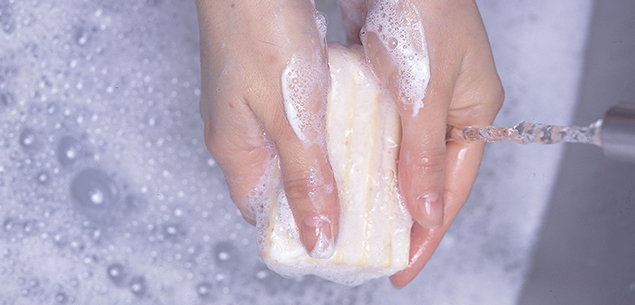As we drag out our blankets from storage to see us through the winter one or two may need a bit of attention. This wool soap jelly is a very old recipe which is perfectly safe to hand wash woollens. Remember to practice the old art of sudsing – I’ve included some instructions when using this jelly.
250g Lux flakes
1L boiling water
Scatter the flakes over the boiling water in a pot while stirring to prevent lumps. Simmer on the stove top until the flakes have dissolved.
When it’s cold, it will form a hard, white jelly. Store in an old ice-cream container or similar with a lid.
For every 2 litres of lukewarm water dissolve 1 heaped tablespoon of jelly and mix well before adding clothes or blankets. If you do get lumps don’t worry, just leave them in the jelly to set.
Sudsing
When Nana washed woollens she knew all about the gentle art of sudsing. This is because wool fibres can easily be wrecked if they are crushed or stretched. Here are some instructions from one of my old books from the early 1900s on how to “sud”:
“Allow the suds (this is water with soap jelly added) to become cool enough to bear the hand comfortably before putting in the flannels. Wash articles one at a time as quickly as possible. Do not rub soap on them or rub them on a washboard.
“Souse them up and down in the water and rub them together with the hands until cleaned. Do not put them through the wringer or wring by twisting, but squeeze out the soapsuds by hand, shake out carefully, stretch and wash in a second lather prepared like the first, but not so strong.
“Rinse in warm water as near the temperature of the suds as possible, to which a little bluing may be added. Press out the rinsing water, shake vigorously, and stretch the articles to prevent shrinking. Pull each piece as nearly as possible into its proper shape and hang up carefully in such a way that the shape may be preserved.
“A clear, bright day with sunshine and a light breeze is desirable. Flannels should be taken down while still slightly damp and rolled up in a dry cloth. If the weather isn’t clear they may be dried indoors, but not near the stove. Avoid extreme changes of temperature, as these cause flannels to shrink and become hard.”
I also add 1 tablespoon of white vinegar to the final rinse to get rid of any lingering soap suds and artificial perfume. Don’t dry woollens in direct sunlight.
Take a look at five ways with baking soda here.
Image: bauersyndication.com.au




